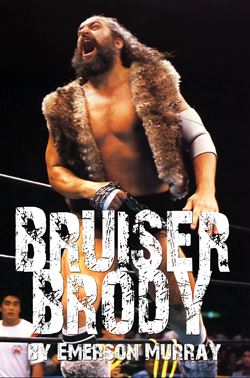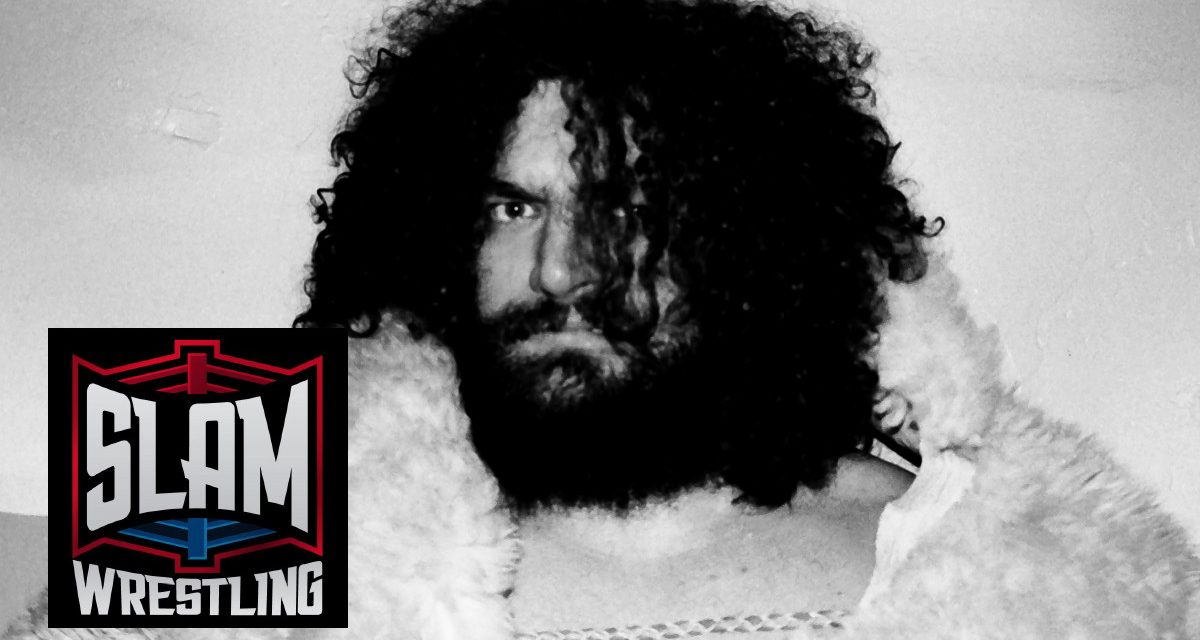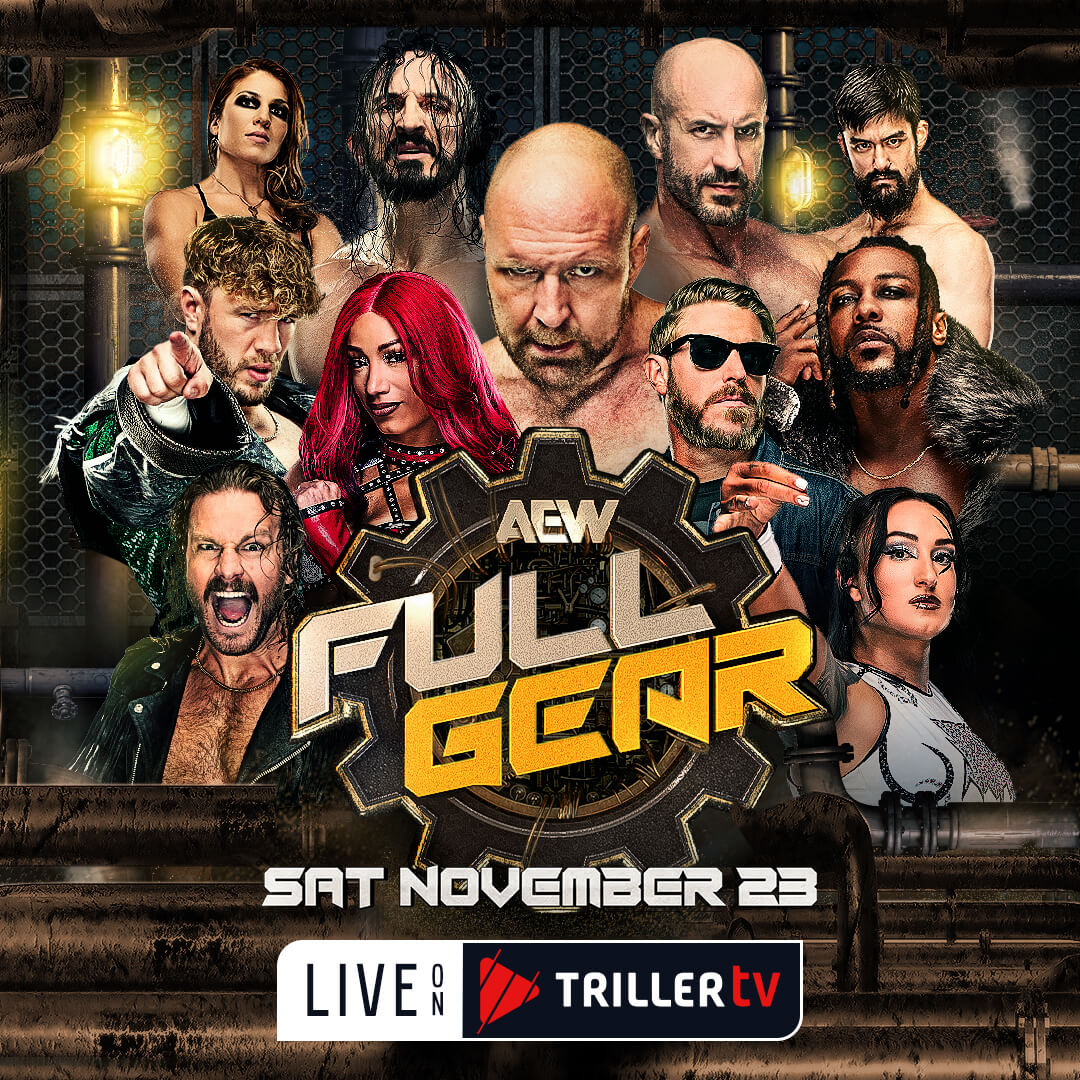By EMERSON MURRAY
I had just hung up the phone with Kevin Von Erich. Kevin’s memories of Bruiser Brody and of the tragic deaths of his brothers left me shaken. Kevin’s strength of will was inspiring and yet he was so friendly and humble. I was rubbing my eyes when my wife handed me a familiar plastic stick. Two dashes. She was pregnant.
Nine months later: on a Monday I started a new job, on Tuesday, my second daughter was born, and on Wednesday, March 14, 2007, Scott Teal from Crowbar Press emailed me that my Bruiser Brody book had been published. Best week ever.
The following months were a whirlwind of wet wipes, podcast interviews, and amazingly supportive emails from Brody fans around the world. It’s those emails that really got to me. Between the outpouring of encouragement for the project, the love for Brody as I was writing the book, and the well-wishers and fans after publication, there were hundreds of emails. I’ve just counted them: 1,226. One way or another, Brody invokes passion.
It was passion that started me on this road. Finding an old copy of Wrestling Ringside #20 in my mother’s attic, turning it over and seeing Brody staring at me through a crimson mask. It was immediate. I’m going to make a documentary, I thought. Eight thousand dollars later I had little footage and had barely scraped the surface. Without skipping a beat, I scrapped the documentary. It would be a book. I started calling around for interviews.

I had Mondays off work. I spent the mornings making phone calls. Afternoons were for transcribing, researching, and writing. When I think of those long Mondays, memories pop like camera flashes: The crazy stories from Brody’s football teammates; calling Ivan Putski every Monday for six years and leaving a message and when he finally answered it was as if I had never called; being told by multiple wrestlers that I would be murdered for asking the questions I was asking and then having to tell my wife, when I met her, about the possibility of assassination; the emotional four hour phone call with Gary Hart; the court records office clerk in Puerto Rico whispering to me, “The transcripts to that trial are not where they are supposed to be. Don’t call here again;” Terry Funk remembering my name and calling me back; Tony Atlas’ trembling voice as he sang to me what he’d sung to Brody in the ambulance; George Napolitano and Brody fans gasping when I asked Lex Luger about “the Brody Incident” at WrestleReunion 2005 — the first time he had been asked about it, according to him — and finally, the emotional responses Brody’s name would invoke. It wasn’t only the fans who were passionate about him. His co-workers were just as emotional. They loved him or hated him.
What hits me the hardest about the project is all the legendary friends I’ve made all over the world. Unfortunately, I’ve met very few of them in person. Photographer Eddie Gries still calls me every once in a while. Every time I answer the phone, I think it’s my dad calling.
When I first talked with Teal at Crowbar Press in 2005, it became very clear that this would be the publisher for my Brody book. Teal understood right away that I wanted to write a textbook. I had been extremely disappointed by the Ric Flair and Harley Race autobiographies — they should have been a thousand pages, at least! I wanted at least a quick mention of every belt and every major match in Brody’s career. At the same time, I had some very specific aesthetic demands. The size, shape, and the color sections were all non-negotiable. I wanted to do the layout myself as well. Teal agreed to it all and was excited, encouraging, and super supportive. He threw interview clips my way, he sent pictures and newspaper clippings, and strategized with me in late night phone calls. I could not have asked for more.
St. Louis wrestling icon Larry Matysik had been super supportive of my book and some of the best information in my book comes from Larry. When he and Brody’s widow, Barbara Goodish, published a second biography only months after my book came out, I was hurt and confused. “It’s a dirty business,” Gries told me, “We’re all dirty.” Teal got me back on my feet. “The two books are complementary of each other,” he said, “Brody’s widow and close friend can’t tell the well-rounded story you can. And you can’t tell the personal type of story they’ve told.” Teal was right and I’m proud and happy to have both books, side-by-side on my shelf.
The second printing of my book came out a couple of weeks ago. A new cover and dozens of new pictures have been added. I also added a short paragraph about Brody’s involvement in Canadian football (see page 61).
As I flip through the new edition it is stark how the landscape of wrestling media has changed. When I switched my project from a documentary to a book around 2002, books on professional wrestling were taking off; the internet was a scrappy, wild west-landscape with only one Brody site (now defunct); YouTube was not around; and the telephone was the best way to get in touch with anyone.
It’s all changed over the last 15+ years. A Google search of Brody videos returns 37,400 results, and there are well over a hundred videos that explore Brody’s death exclusively on YouTube. Practically every wrestler alive has been interviewed on the subject. Wrestlers have Twitter, Instagram, and Facebook accounts. Bruiser Brody Fan Facebook pages have posted hundreds of rare and amazing photographs. I was happy to appear in a Brody documentary that actually did get completed in 2017 and there’s another on the way from Vice. Hell, WWE even made a Brody action figure!
It’s also heartbreaking to realize how many people I talked with have passed away and shocking how history has warped the image of others.
Dusty Rhodes told me, “You’re going to have a tough time selling a book on Brody. He wasn’t in any Starcades or WrestleManias. The average wrestling fan doesn’t know him.” Rhodes was right at the time. But, with the popularity of extreme wrestling in the early 2000s, through the democratization of media, and the passion of his fans, maybe in a small part from Matysik and Goodish’s book and my book, Brody’s stock has grown considerably. Crowbar Press managed to sell out of the 1,000 copies in the first printing (my mom did buy 20 copies). History has come to Bruiser Brody.
RELATED LINKS
- Order the second printing of Bruiser Brody at Crowbar Press.
- Bruiser Brody story archive
- Guest Column story archive
Emerson Murray is a painter, who lives and works in Santa Cruz, California. Visit his website, emersonmurray.com, for more info.


